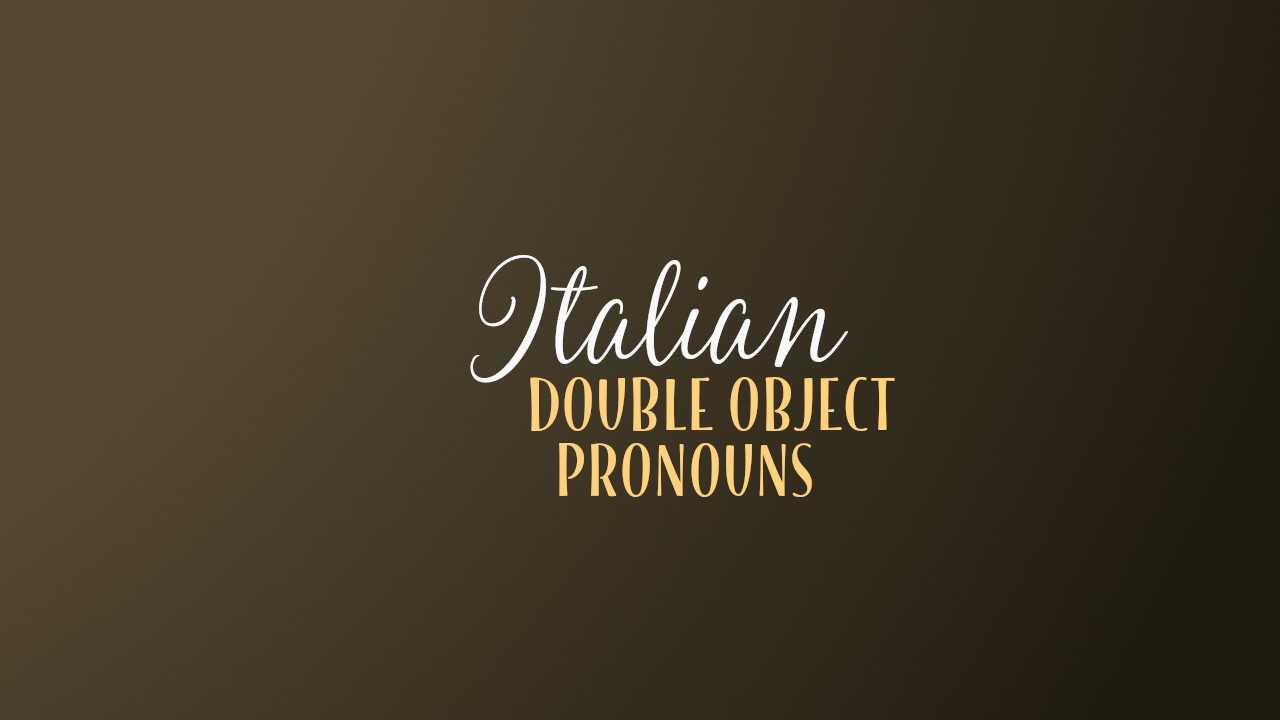In Italian, it’s common to combine direct and indirect object pronouns in the same sentence.
These combinations are called double object pronouns.
These are a natural shortening of sentences that make them flow more naturally.
A sentence like “I gave the book to them” could also be “I gave it to them” (if it’s clear you’re talking about the book).
If you take this sentence:
I gave it to them.
You have it (direct object pronoun) and [to] them (indirect object pronoun).
You could reorder the sentence like this:
I gave them it.
This sentence means the same thing as the previous one (even though it sounds a bit sloppy/incorrect).
In Italian, double object pronouns combine the direct and indirect pronouns together into a pair or a single word (in the case of third-person pronouns):
I gave herit.
Gliel’ho dato.
In this made up example (if it were a real word), “herit” would be the double object pronoun. Of course, in English we don’t write this, but when you hear natural speech, it does indeed sound like a combined word.
In Italian, it’s formalized into writing (with some spelling changes).
Table of Italian double object pronouns
Italian double object pronouns are indirect object pronouns and direct object pronouns combined.
Here’s how double object pronouns look:
| lo | la | li | le | |
|---|---|---|---|---|
| mi | me lo | me la | me li | me le |
| ti | te lo | te la | te li | te le |
| gli le | glielo | gliela | glieli | gliele |
| ci | ce lo | ce la | ce li | ce le |
| vi | ve lo | ve la | ve li | ve le |
| loro / gli | glielo / lo loro | gliela / la loro | glieli / li loro | gliele / le loro |
When combining these, the indirect object pronoun precedes the direct object pronoun, for example, glielo (to him/her/it). Only gli is combined with the direct object pronoun to form one word.
You’ll also notice that indirect object pronoun -i ending is changed to -e (e.g. mi —> me).
In case you need a refresher on direct and indirect object pronouns, here they are:
| Direct Object Pronouns | Translation |
|---|---|
| lo | him/it |
| la | her/it |
| li | them (masculine) |
| le | them (feminine) |
| ne | of them |
| Indirect Object Pronouns | Translation |
|---|---|
| mi | to me |
| ti | to you |
| gli | to him/her/it |
| ci | to us |
| vi | to you (plural/formal) |
| loro | to them |
Syntax and verb attachment
The placement of double object pronouns is crucial.
They usually precede the verb, as in glielo do (I give it to him/her).
In negative sentences, they sit between the negation non and the verb, for example, non glielo do (I don’t give it to him/her).
The double object pronoun can also attach to the end of a verb.
A simple example of this would be:

Diglielo.

Dammelo.
This is common when giving concise commands (imperative), but also with participio passato, infinitive and gerund.
Examples and usage of Italian double object pronouns
Here are a few more usage examples to get a better idea of how double object pronouns are used.

Me lo dai?

Non glielo possiamo dire.

All’uomo lo do.

Ce la presti?
Summary
Double object pronouns combine the direct and indirect pronouns together into a single pair or word.
One of the most common beginner trip-ups is confusing the order and placement of the pronouns. Remember that the indirect object pronoun comes before the direct one. Also, depending on the verb tense and form, the position may change.
Buon apprendimento! 🇮🇹
🎓 Cite article
 Grab the link to this article
Grab the link to this article











































COMMENTS
NO ADVERTISING. Links will be automatically flagged for moderation.